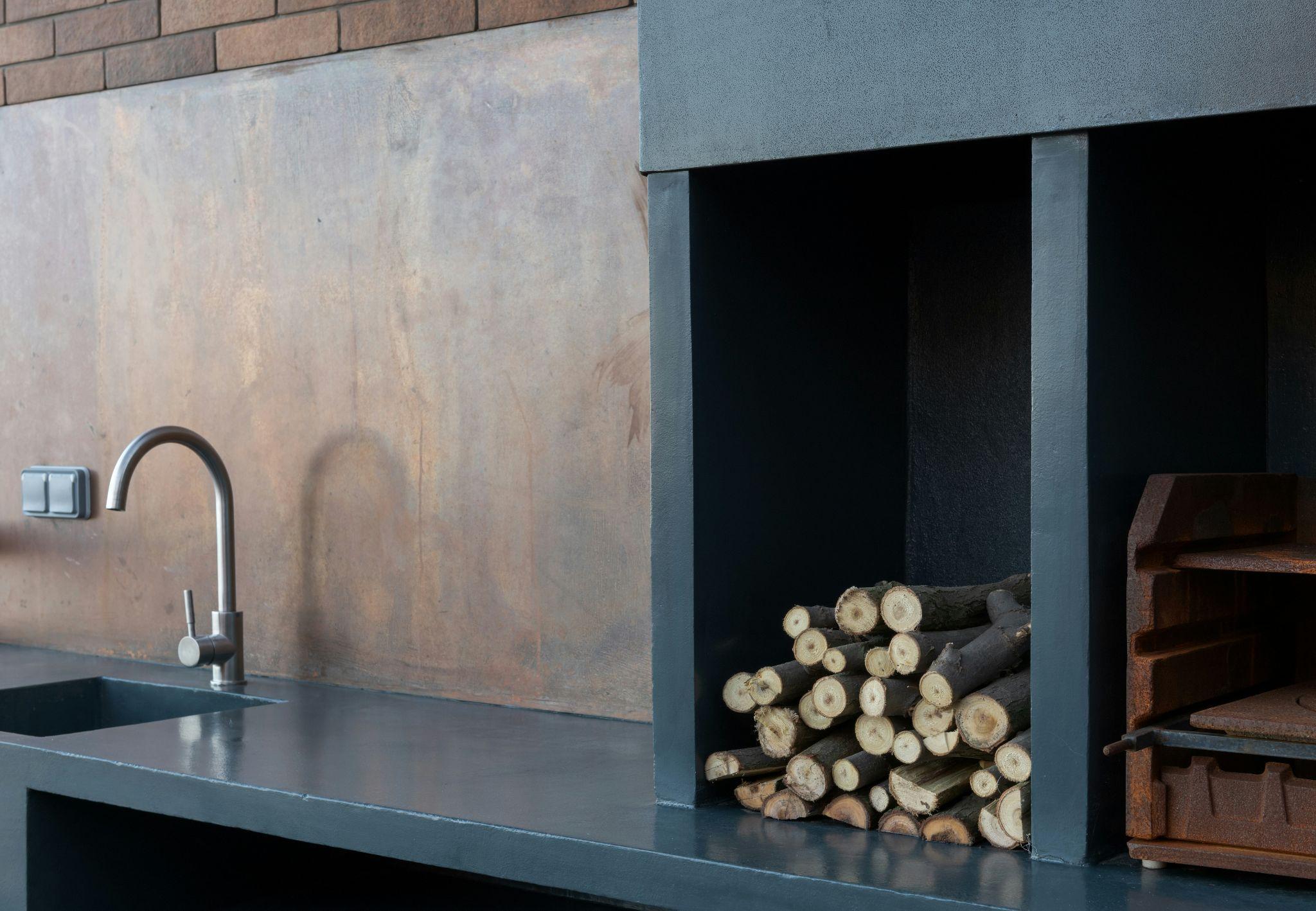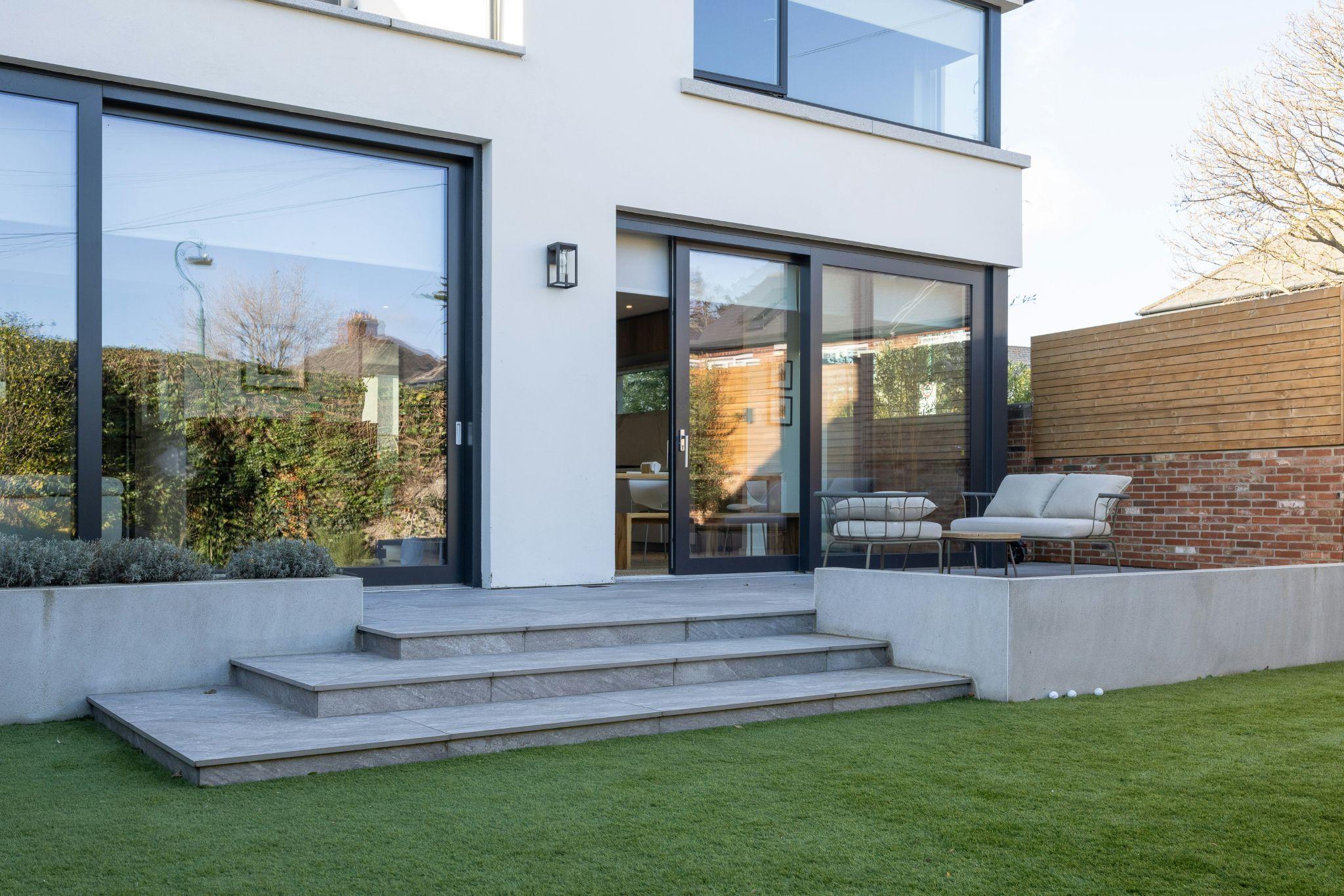In 2025, outdoor spaces are being reimagined not just as extensions of the home, but as fully immersive sanctuaries that elevate daily living. The fusion of sustainability, advanced technology, and refined design is transforming gardens, patios, and poolside retreats into dynamic living environments that cater to relaxation, wellness, and sophisticated entertaining.
As homeowners seek to make the most of their outdoor real estate, every detail—from material choices to functional layouts—plays a critical role in crafting spaces that feel both indulgent and responsible. Frisco landscape designer Clark Outdoor Designs recommends these trends for 2025, guiding homeowners toward elegant, eco-friendly, and highly functional outdoor environments that reflect contemporary lifestyles and future-forward thinking.
1. Earthy Minimalism
A restrained palette and clean lines define outdoor spaces this year. Think polished gravel, restrained planting schemes, and sculptural hardscape design. Natural materials like local stone and sustainably sourced timber honor the “less is more” philosophy, creating serene backdrops for thoughtful accents.
This design approach fosters tranquility and allows homeowners to fully appreciate the beauty of individual design elements. By minimizing visual clutter, the focus shifts to textures, shadows, and the interplay between light and natural forms.
2. Travertine Pool Decking
For luxurious yet durable pool areas, travertine has surged in popularity. Clark Outdoor Designs often recommends travertine pool decking installation for its combination of aesthetics and function. Its natural non-slip finish ensures safety, while its creamy, timeless color keeps surfaces cool underfoot even during the hottest months.
Perfectly matching interior stone accents, it creates a harmonious flow from indoor living spaces to outdoor retreats. Travertine’s versatility allows it to complement various design styles, from modern minimalism to Mediterranean elegance. Additionally, its porous nature offers excellent drainage, reducing water accumulation and enhancing safety around pool areas.
3. Integrated Smart Lighting
Outdoor lighting is no longer an afterthought—it’s essential for safety and ambience. Building on styles like those featured in Opple House’s outdoor lighting guides, expect pathway lights that adjust brightness based on time, wall sconces synced to interior moods, and accent lights that spotlight key garden sculptures or specimen plants.
The integration of smart technology allows homeowners to create customizable lighting scenes, enhancing outdoor gatherings or providing a calming atmosphere for solitary evenings under the stars. Solar-powered options further reduce energy consumption, aligning with broader sustainability goals.
4. Planting for Climate Resilience
Water-wise and pollinator-friendly gardens are crucial in 2025. Native grasses, wildflowers, and drought-tolerant perennials reduce irrigation needs and support biodiversity. Incorporating vertical greenery or living walls adds lush textures on decks or patios, while botanical choices align with local climate patterns.
These resilient plantings not only conserve resources but also create dynamic seasonal interest, attracting beneficial insects and birds. Designing with biodiversity in mind contributes to healthier ecosystems and offers educational opportunities for families to engage with nature.
5. Outdoor Room Zoning

Outdoor spaces are being designed as distinct rooms—each with a clear function. Dining terraces equipped with weather-resistant kitchens, cozy fire-pit lounges, and shady reading nooks with pergolas are styled to reflect indoor décor trends, using textiles, rugs, and furniture that feel like extensions of the living room.
This zoning allows for greater flexibility, accommodating various activities simultaneously while maintaining a cohesive aesthetic. Thoughtful layout planning ensures smooth transitions between areas, optimizing both space and comfort.
6. Smart Irrigation & Water Features
Homeowners are installing irrigation systems that respond automatically to soil moisture, rain forecasts, and temperatures. Reflecting Opple House’s emphasis on ease, the trend also includes minimalist water features—sleek trough fountains and reflecting pools that offer soothing soundscapes without visual clutter.
These water elements serve as focal points that enhance relaxation and provide auditory tranquility, transforming outdoor spaces into personal retreats. Advanced filtration and recirculation systems minimize water waste, making these features both beautiful and sustainable.
7. Sustainable Hardscape Materials
Eco-friendly hardscaping is taking center stage. Flagstones set in permeable grind, recycled concrete pavers, and salvaged timber are trending. These materials look good, manage stormwater naturally, and reduce environmental impact—mirroring Opple House’s mindset of quality with conscience.
The use of permeable materials allows rainwater to filter back into the ground, reducing runoff and mitigating urban heat island effects. Sustainable sourcing practices ensure that these materials contribute positively to global conservation efforts.
8. Year-round Comfort Features
To extend outdoor seasons, 2025 outdoor areas are equipped with integrated heaters, retractable canopies, and shade sails. Stylish fire pits and outdoor fireplaces also transform patios into cozy evening spaces. With smart tech, homeowners can control warmth and lighting from their phones.
These features enable year-round enjoyment of outdoor spaces, regardless of weather conditions. Comfortable seating arrangements, insulated pergolas, and windbreaks further enhance usability, turning gardens into true extensions of the home.
9. Custom Outdoor Kitchens & Bars

Cooking and entertaining outdoors is evolving. Fully equipped outdoor kitchens with pizza ovens, built-in BBQs, refrigeration, and weatherproof bar setups are becoming mainstream. Using materials like honed stone and stainless steel helps unify the aesthetic of interior and exterior prep zones.
These culinary spaces encourage social interaction and provide versatile settings for gatherings of all sizes. Thoughtful layouts consider ventilation, lighting, and appliance placement to maximize functionality and enjoyment.
10. Artful Accents & Sculptural Pieces
Sculptural planters, modern art pieces, and overhead pergolas serve as focal points in landscape design. Painting them in the earthy, muted tones seen on Opple House’s interior decor posts integrates outdoor aesthetics with interior palette trends—creating visual bridges between spaces.
These artistic elements express personal style and elevate the sophistication of outdoor environments. Rotating seasonal displays and incorporating locally crafted pieces add uniqueness and support regional artisans.
Why These 2025 Trends Matter
- Holistic cohesion: Aligns interiors and exteriors for seamless living.
- Eco-conscious design: Supports climate resilience and reduces waste.
- Higher property value: Fully-equipped outdoor living spaces boost curb appeal.
- Health & wellbeing: Access to nature, outdoor cooking, and flexible spaces enhance both mental and physical well-being.
According to the U.S. Environmental Protection Agency, sustainable landscape practices—such as using native plants and efficient irrigation—can reduce water usage by 30–60%.
The landscape design trends of 2025 reflect a growing desire for sustainable luxury, technological integration, and holistic living. By embracing these forward-thinking concepts, homeowners can create outdoor spaces that are not only visually stunning but also functional, eco-friendly, and deeply connected to personal well-being. As outdoor living continues to evolve, these trends set the stage for spaces that enrich daily life, foster community, and honor the natural environment.

